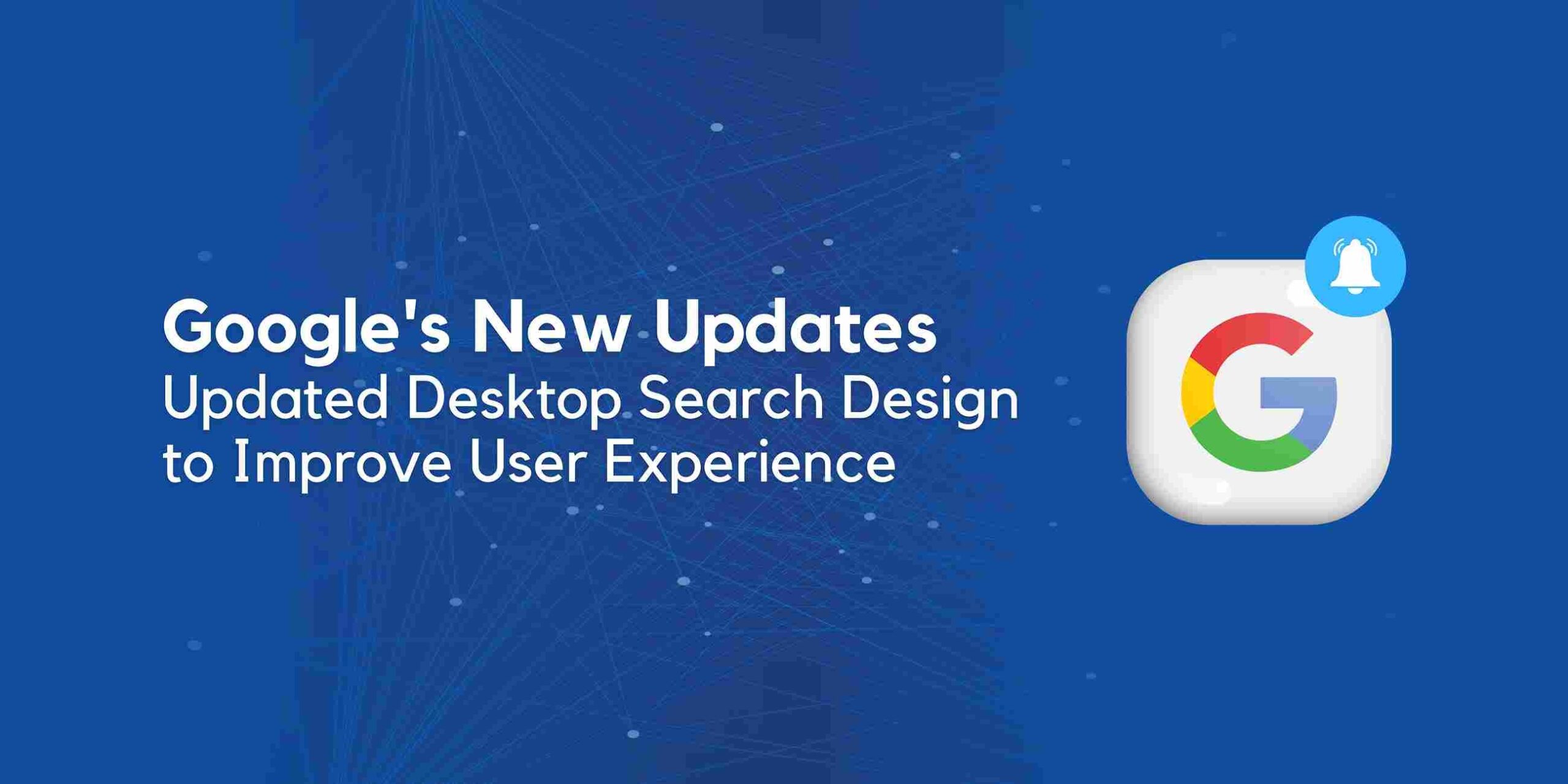
Google has recently introduced new updates to its desktop search design, providing users with a more visually appealing and easy-to-use interface. With the introduction of favicons and site names, users can now quickly identify websites in search results and ads. In this blog post, we will explore google’s latest updates and discuss how they can improve user experience.
Google is always looking for ways to improve the user experience and provide more accurate search results. These updates include the addition of favicons and site names to search results, clearer labelling of ads, and more. Here is all the information about google’s latest updates:-
Google’s latest updates to its desktop search design now include favicons and site names, similar to the design introduced to mobile search in October 2019The reason for this change is to enhance the user experience and make search results and ads more visually distinctive. Google has also made adjustments to the size and shape of favicons displayed in search results to increase their visibility. These changes will apply to search ads as well, providing greater clarity and transparency for advertisers. To help you understand these changes better, we have further broken down each heading into detailed subsections.
In case you are wondering what favicons are, they are small icons that appear in the browser tab when you visit a website. Site names are the names of the websites displayed in the search results. By adding favicons and site names to search results on the desktop, users can easily identify websites associated with each link. Moreover, adjusting the size and shape of favicons in search results will also make them more noticeable.
With google’s latest updates, the size and shape of favicons in search results have been adjusted to make them more visible. Additionally, the inclusion of site names in search results provides greater clarity and transparency for advertisers and helps improve the accuracy of the site name displayed on a page.
Google is dedicated to making sure that users can easily tell the difference between ads and organic search results. To achieve this, In Google’s latest updates, Google has made some updates to the labelling of ads also. The label for Search ads will now appear on a separate line in the top-left corner of the ad, making it more distinct. On mobile devices, ads will be labelled with the word “Sponsored” in bold black text, which will make them stand out from other types of content. These changes provide users with greater transparency and a better user experience.
Google will no longer display favicons next to ads, making them more distinguishable from organic search results. The change is designed to make ads more prominent, but at the same time, not mislead users into clicking on them unintentionally.
The green “Ad” label has been replaced with a bold, black “Ad” label to increase visibility and make it more distinguishable from organic search results. The new label will help users identify ads more easily and avoid clicking on them by mistake.
Google determines the names of sites that appear in search results based on the content of the site and references to it that are available online. Unfortunately, it’s not possible to modify site names for individual sites manually. However, you can enhance the accuracy of the name displayed for your site by including WebSite structured data. This underscores the significance of utilizing structured data to assist Google in presenting your desired site name in search results. With the most recent updates from Google, there are a few essential measures you can take to improve the precision of your site name.
Structured data is a type of code that provides information about your website to search engines. By adding structured data to your website, you can provide Google with more information about your site, including your preferred site name. This can help Google to display your site name more accurately in search results.
Google uses the content on your website to determine what your site is about. Ensuring that your website’s content is relevant to your topic can help Google to understand what your site is about and improve the accuracy of your site name in search results.
Your website’s title tag is one of the most important on-page SEO factors. By optimizing your title tags, you can help Google to understand what your website is about and improve the accuracy of your site name in search results.
Google’s latest updates to its desktop search design with favicons and site names aim to improve the user experience by making search results and ads more visually distinct. Having a website name that looks good and accurately reflects your content can improve the likelihood of getting clicks from potential visitors. For marketers and SEO professionals, this update highlights the importance of using structured data to help Google display your preferred site name in search results. By staying up-to-date with Google’s latest updates and incorporating them into your online strategy, you can stay ahead of the curve and ensure that your website is easily discoverable by potential visitors.
Also, Read: LinkedIn New Updates 2023: How to Customize Your Content and Boost Your Visibility